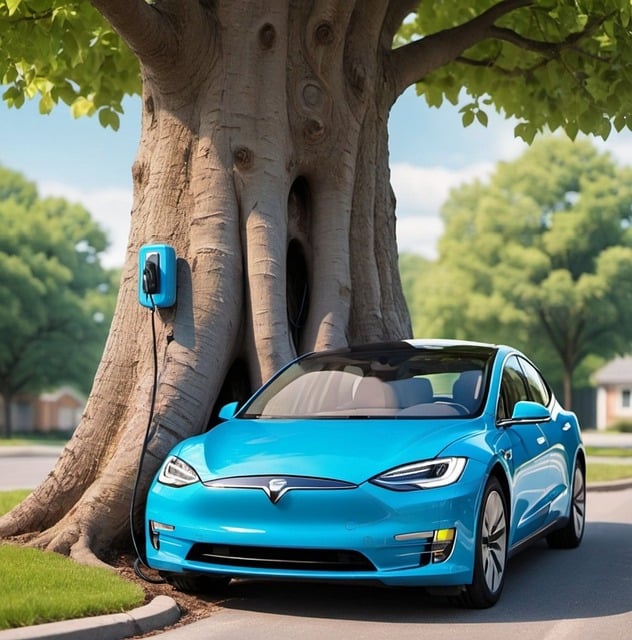Sustainable mobility solutions are transforming the urban transportation landscape, offering a greener, more efficient path forward for cities worldwide. Adopting sustainable mobility practices is an essential response to the urgent issues of climate change, urban congestion, and declining air quality.
This blog post examines the multifaceted nature of sustainable mobility, uncovering its essential elements, advantages, obstacles, and emerging trends that influence our movement in urban settings. Join us as we journey towards cleaner, more intelligent, and more inclusive transportation systems in our cities.
Key Components of Sustainable Mobility
Sustainable mobility comprises several vital components that work together to create a comprehensive and integrated transportation network:
- Public Transportation Systems: These include buses, trains, and metros that provide efficient and accessible travel options, reducing the reliance on private vehicles.
- Non-motorized Transport: Walking and cycling are fundamental elements of mobility sustainable practices, encouraging healthier lifestyles and reducing environmental impacts.
- Electric and Hybrid Vehicles: Adopting vehicles equipped with lithium-ion battery powertrains contributes to cleaner urban environments by decreasing vehicular emissions.
- Car-sharing and Ride-sharing Programs: These services offer flexible, cost-effective travel options while reducing the number of private vehicles on the road, thus alleviating urban congestion.
 Example of Sustainable Mobility
Example of Sustainable Mobility
Advantages
The shift towards sustainable mobility solutions offers numerous benefits across environmental, economic, and social spheres:
- Environmental Benefits: A significant reduction in emissions and pollution is achieved by adopting clean and efficient transportation modes.
- Economic Impacts: Sustainable mobility can lead to substantial cost savings for individuals and communities while creating job opportunities in new and emerging sectors of the green economy.
- Social and Health Advantages: Enhanced public health and improved accessibility are crucial advantages, as clean transportation reduces air pollution and promotes active travel options.
Challenges and Strategies for Implementing Sustainable Mobility
The path to achieving sustainable mobility is fraught with challenges that need strategic responses:
- Infrastructure and Investment Barriers: Building the necessary infrastructure for sustainable transportation requires substantial investment and long-term financial commitment.
- Behavioral Change and Public Acceptance: Encouraging the public to shift from traditional to sustainable transportation modes necessitates behavioral change and widespread societal acceptance.
- Policy and Regulatory Frameworks: Effective policies and regulations are essential to support the development and integration intelligent transportation systems and other sustainable initiatives.
- Technological Advancements: Continuous technological innovation, especially in areas like powertrains lithium-ion batteries, is vital for advancing sustainable mobility solutions.
Case Studies: Successful Sustainable Mobility Initiatives Around the World
Several cities and countries have made significant progress in implementing sustainable mobility solutions. For example:
Future Predictions
The future of sustainable mobility looks promising, with emerging trends and technologies continually shaping the landscape. The ongoing development of intelligent transportation systems and advancements in electric and autonomous vehicle technologies herald a new era of sustainable urban mobility. Governments, businesses, and individuals are essential in this transition, as their policies and investments aim to encourage and implement sustainable mobility solutions.
Summary
In conclusion, sustainable mobility solutions represent a pivotal shift towards creating greener, more efficient, innovative urban environments. The united endeavors of governments, businesses, and individuals to adopt and promote these solutions are vital for effectively transforming urban transportation systems.
As urban areas expand and develop, incorporating sustainable mobility practices becomes crucial in reducing environmental effects, boosting economic sustainability, and elevating the quality of life for city dwellers. By prioritizing sustainable urban mobility, we pave the way for a future where transportation is environmentally friendly but also accessible and inclusive for all community members. The journey towards sustainable mobility is a shared responsibility, and together, we can drive positive change for a healthier, more sustainable world.
 Sustainable Mobility
Sustainable Mobility
Accredited Limo values sustainable transportation options and actively seeks to integrate sustainable practices to enhance sustainability.
For additional information on eco-friendly transportation, follow Accredited Limo’s knowledge base.
Frequently Asked Questions
- What is an example of sustainable mobility?
Using public transportation, such as buses and trains, instead of driving a car. Carpooling or ridesharing with others. Walking or biking for short distances. Using electric vehicles or hybrids.
- How can we improve sustainable mobility?
Implementing green transportation options, such as promoting public transit, cycling infrastructure, and electric vehicles, and encouraging carpooling and telecommuting can help reduce the overall carbon footprint associated with transportation.
- What are the three pillars of sustainable mobility?
The three pillars of sustainable mobility are economic, social, and environmental.
- What are sustainable transport solutions?
Sustainable transport solutions refer to environmentally friendly methods of transportation that minimize the negative impact on the environment, reduce carbon emissions, and promote long-term ecological balance. These solutions often include public transportation, cycling, walking, electric vehicles, and using renewable energy sources in transportation systems.